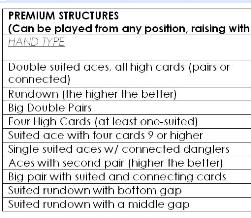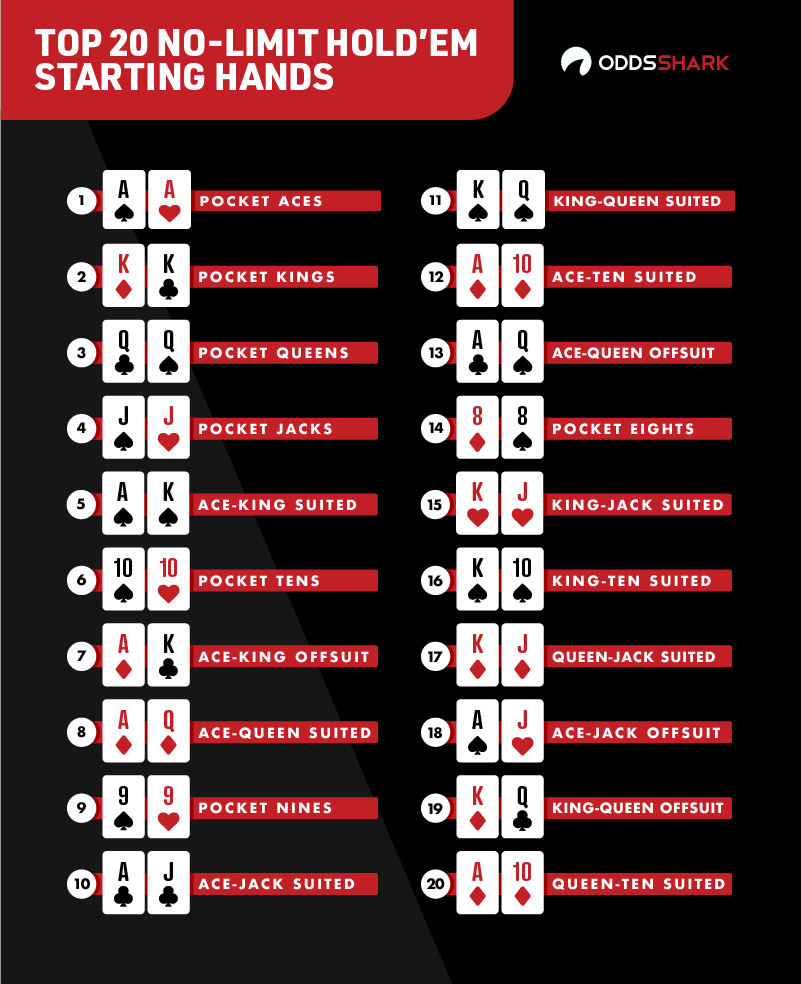Omaha Poker Combinations
In poker, players form sets of five playing cards, called hands, according to the rules of the game. Each hand has a rank, which is compared against the ranks of other hands participating in the showdown to decide who wins the pot. In high games, like Texas hold 'em and seven-card stud, the highest-ranking hands win. The first thing to remember in the poker rules is the accepted combinations of cards (poker hands), which are compared at showdown by seniority to determine the winner. In this article you will find a description of all poker combinations with pictures and illustrative examples for Texas Hold’em, Omaha and other types of this card game.
Here are some important probabilities in Omaha that returns in different situations. Knowledge about probabilities will help you to better evaluate situations in poker. You will , for example, know when you should call and when you shouldn't, and, vice versa, know when to fold and when the odds are in your favor.
| Drawing hands probabilities | Odds | Percent |
|---|---|---|
| Double wraparound straight draw (e.g. hand: 9-8-5-4, flop: 7-6-x) | 0.48-1 | 68% |
| Wraparound straight draw (e.g. hand: 8-5-4-x, flop: 7-6-x) | 0.67-1 | 60% |
| Straight flush draw | 0.84-1 | 54% |
| Hitting a full house with three pairs | 3-1 | 24% |
| Hitting a full house with two pairs | 5.1-1 | 16.5% |
| Hitting quads with a set | 21.5-1 | 4.5% |
Starting hands

There are many starting hands in Omaha (16.432 if not all suit combinations are counted), which makes it difficult to get an overview. Table 2 will hopefully increase that overview a bit.
| Situation | Percent |
|---|---|
| A-A-K-K double suited to win against average hand | 73% |
| A-A-K-K rainbow to win against average hand | 68% |
| A-A-7-7 double suited to win against average hand | 72% |
| A-A-7-7 rainbow to win against average hand | 67% |
| A-A-J-T double suited to win against average hand | 76% |
| A-A-J-T rainbow to win against average hand | 71% |
| J-T-9-8 double suited to win against average hand | 56% |
| J-T-9-8 rainbow to win against average hand | 49% |
Comments
Exemple of a double suited hand: Q♥ A♥ 2♦ K♦
Exemple of a rainbow hand: Q♥ A♣ 2♠ K♦
The best Omaha hands are less bigger favorites against an average hand compared to Texas Hold'em.
In Texas Hold'em, common knowledge is that A-A is very big favorite against all other hands. In Omaha, A-A as a part of a hand is far from that strong. In general, an A-A-x-x hand versus a random four-card hand is a 70-30 favorite in average (if all the starting hands that are normally folded are excluded, the A-A-x-x hands will be even less favorites).
Made hands versus draws
A typical feature in an Omaha Hi game is a set against a hand with several drawing possibilities. The made hand will not be a very big favorite (sometimes it is an underdog), so the recommended strategy is to play fast and bet/raise the pot in these situations.
| Situation | Percent |
|---|---|
| Top set against flush draw | 70%-30% |
| Middle set against flush draw | 70%-30% |
| Top set against flush draw + two pairs | 68%-32% |
| Set against wraparound straight draw | 52%-48% |
| Set against double wraparound straight draw | 53%-47% |
Comments
Factors that can affect the odds are for example blocking cards.
Flush draws versus straight draws
In Omaha, hands with flush draws are often more likely to win than straight draws.
| Situation | Percent |
|---|---|
| Flush draw against wraparound | 60%-40% |
| Flush draw against double wraparound | 55%-45% |


Comments


Since that many cards are in action, there are often combined possibilities, which makes it hard to give general percentages. A hand with a flush draw has mostly something else, like a pair or a straight draw as well.
Omaha Poker Card Combinations
Related article:Omaha strategy